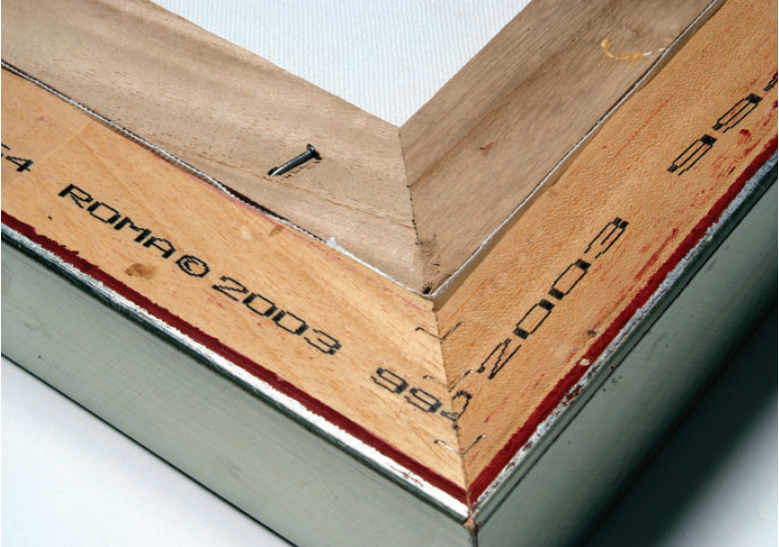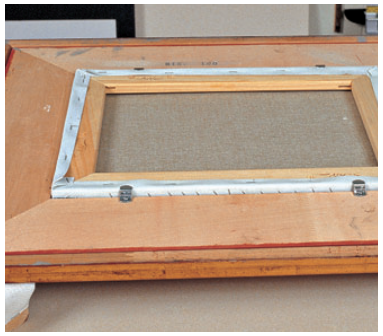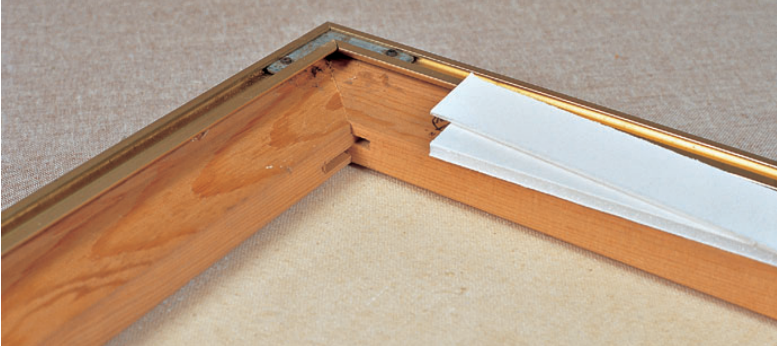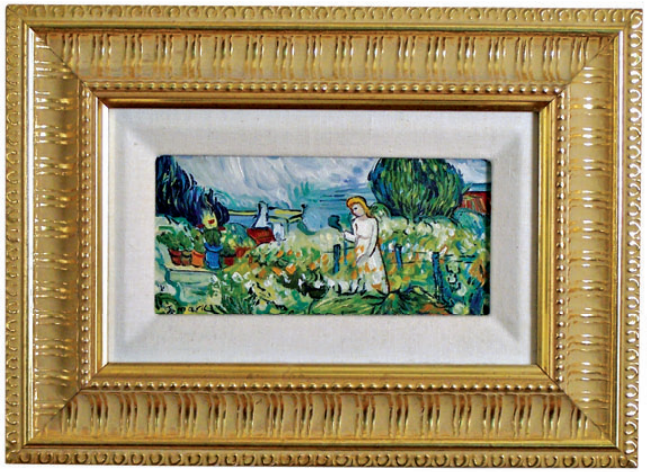These tips apply to all types of art that are stretched on strainers or stretcher bars including paintings, photographs, and needlepoints.
Wood Frames
If the stretcher bars fit perfectly inside the frame, you can use the usual fitting techniques for wooden frames. However, most wooden frames are not deep enough to accommodate canvas art comfortably, so the canvas protrudes from the back of the frame. Offset clips are the most common type of hardware used for fitting a protruding canvas. A second option is canvas clips, which grip the frame rabbet and snap over standard stretcher bars. For DIY framing, “toenailing” (tapping long, thin nails at an angle from the edge of the stretcher bar into the frame) is another alternative. Whether using nails or clips, only a small number are needed, such as one on each side for an 11″ x 14″ (27.9 x 35.6 cm) frame, or three on each side for a 24″ x 36″ (61 x 91.4 cm) frame. A dust cover paper may be applied afterwards, covering the protruding stretcher bars and the clips or nail heads.


Metal Frames
Metal frames made especially for canvas have room for the canvas and a backing board. Sometimes there is additional room that should be filled with boards or spring clips. For more details, you can read our blog “Basic Fitting Procedure for Metal Frames”.
Glazing and Spacers
Glazing is not typically used on paintings; however, if glazing is needed a spacer must be installed between the glazing and the art to keep the paint from sticking to the glazing and to preserve the dimensional texture of the paint. The spacer may be thin strips of matboard or strips of EconoSpace. The spacer is installed after the glazing is in place; then the painting is placed in the frame and fitted.

Liner moulding is used as a border when framing canvas. It can be used as a spacer by placing the glazing in the frame. Then place the assembled liner frame on top of the glazing and hold it in the frame with nails or framer’s points (using a light touch to avoid breaking the glazing). Place the canvas in the rabbet of the liner and fit.

Floater Frames
These frames are made specially to show the edges of the canvas. The art is attached to the frame using screws that go through a ledge on the frame and into the back of the stretcher bars, so the canvas appears to float within the frame. Sticky-backed Velcro can also be used to hold the canvas to the frame.

Fitting Shadow Boxes
In many ways, the fitting process for shadow box frames is the same as for other types of art, but there is one significant difference: The interior sides of the frame will be visible, so they are part of the presentation of the items in the frame. Ready-made shadow box frames, and even some custom frames, come with finished interiors and a second rabbet (a back rabbet) to support the backing board (which holds the objects), but most custom shadow box frames will require the framer to do this interior finishing. There are two goals: Create an attractive finish for the inside of the frame, and create a ledge that serves as a back rabbet. The two most common methods for accomplishing these goals will be discussed in the upcoming blog.